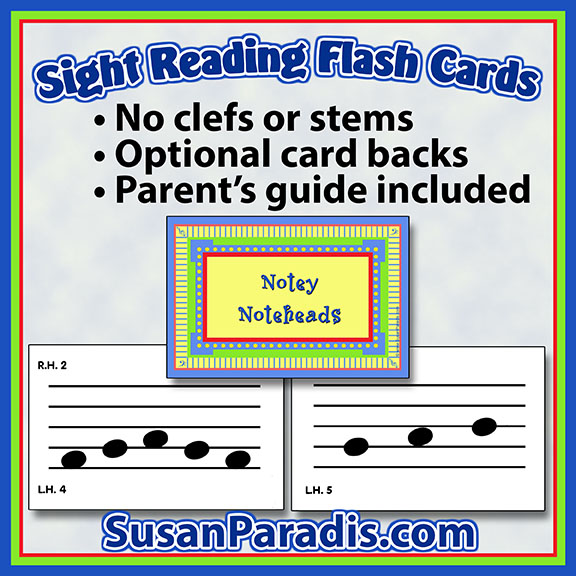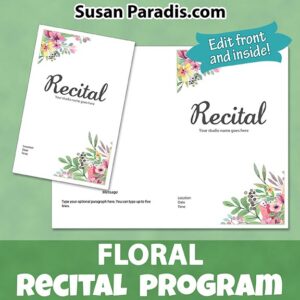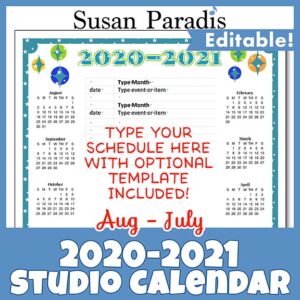Cards to Help Music Reading
Click here to purchase Notey Noteheads
[My last post expressed the frustrations we have when intelligent and musical students have trouble with note reading at the piano. But there is hope, and no matter how much trouble a student has, they can improve. They may not turn into our best sight-reader, but with time we can help them learn to read well enough to learn new music on their own.
Today’s Throwback Thursday is a printable that will help. Notey Noteheads is a set of flash cards to help students who are learning to read music, originally posted about five years ago. If parents take the time to work on this at home, it will really help! The following was posted a few years ago.]
I decided to make a new set of pre-reading cards, a set that both teachers and parents can use. With that in mind, I made them the size of playing cards with only 3 pages to cut out. There is one page each for steps, skips, and repeats. I also included a very detailed parent/new teacher instruction guide that took me a lot of time to write, so I really hope it helps. Trust me, if you only show these cards to parents, they make no sense. Once parents see how they work, they are delighted to know they do not need to know how to read music to help their child! I loan these cards to parents, but you can also email parents the link to my site for them to print. (Please do not email the PDF as I depend on visitors to my site to help keep all this material free.) Remind them they are free!
Parent’s guide and card backs are included in the file
There are 5 pages included in this printable. The first pages are the cards. There is also a colorful back to the cards, which seems really important to my students, because it makes it more fun. Children are very visual and are attracted to colorful images. There is guide for parents. For those of you who have no idea how to print on the back of cards, or how to print only a few pages, I posted a tutorial on my FAQ page. Scroll down to read it. When cutting out the cards with printed backs, use the colorful side as your cutting guide.
Daily use of these cards when students are learning notes that move up, down, and repeat can make a big difference in their music reading abilities.
They can help both the precocious child, and the child who needs lots of extra help.
One more thing. Start with the stepping cards. If students have not been introduced to skipping notes, save them for later. Be sure to tell your parents which cards to use.





Dear Susan,
This is SO great. I do notice that some students don’t seem to notice when a note is exactly the same as the one previous, for example. Sometimes I wonder if they are looking at something other than the note-head.
Can I make a suggestion? I send files like this off to the printer and so it is most helpful to me if they are in order of a double-sided document. In this way, the front side of the cards is the first page, then the backs of the cards are the second. If there are more cards with the same backs, it is helpful to have them all there in order in the resource, rather than assuming people will figure out which back goes on which, and print as many as they need manually. Know what I mean?
I got baffled and couldn’t re-compile the Don’t Swipe My Sharp game to send to Staples, so I let it go, even though I would really like to print and use that game.
with gratitude for your resources and wisdom,
Linnea
Thank you for the feedback. I’ll try to make my card more user friendly in the future.
Would you like me to send you the file I put together for this one, which is compiled in this way? (I managed to get pdf to co-operate with me this time).
What a wonderful resource, Susan! Many of my students lose their music reading skills over the summer so thank you for your generosity.